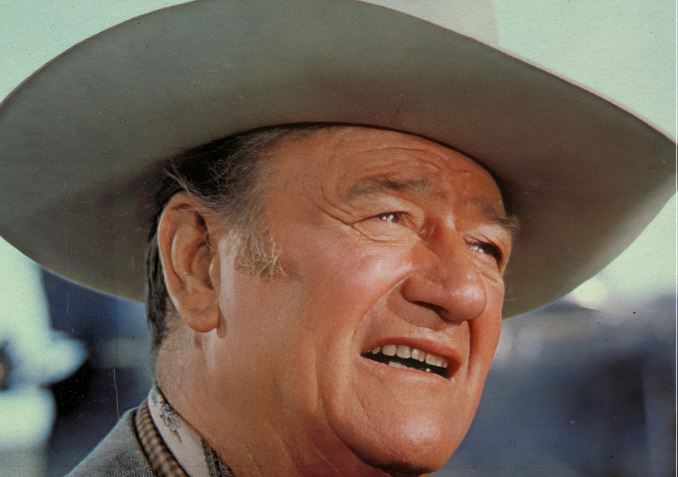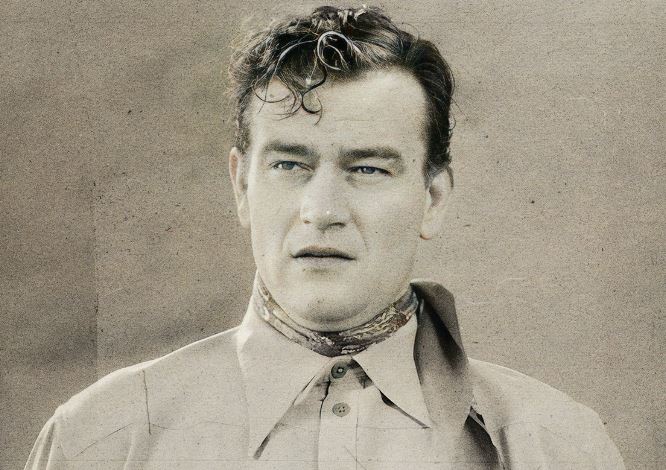Sometimes the true icons of culture come with a lot of baggage. In music, art and, of course, film, there are a number of different pillars of art form that have both demonstrated themselves to be culturally infallible while demonstrably ugly in their personality. Through his starring roles in westerns and war movies during the golden age of cinema in America, John Wayne became a cultural icon who has since been denoted as one of Hollywood’s most polarising figures.
Wayne’s position as one of the most famous actors of all time is untouchable. However, as the decades have passed, the actor’s behaviour both on and off set has left his legacy in tatters. Racist outbursts, on-set issues with co-stars and a generally unwelcoming demeanour for any progressive thinkers who dare interact with the film industry, John Wayne comes with as much baggage as a Boeing 747.
Aside from his personality, his performances in the epic western The Searchers, as well as Rio Bravo, True Grit, and Red River, are probably what the actor is best known for, but Wayne also had a turn in the director’s chair during his long career.

Wayne is certainly not well known for being a filmmaker in the directorial sense, but there is a good reason why he might have been considered a steady fit for the role during his heyday. As well as being authoritarian and disciplined when it came to making movies, Wayne had also endured so many shoots, that his experience levels were second to none.
However, his time working on the film, titled Hondo, created some difficult challenges for the actor, and his co-star in the picture, Geraldine Page, revealed Wayne would often take his frustration out on one of the child actors on set.
Hondo tells the story of Hondo Lane (Wayne), a riding dispatch for the US Cavalry, who stumbles across a Homesteader (Page) and her eight-year-old son (Lee Aaker) and decides to protect them both from Apache tribes. John Farrow officially directed the film; however, Wayne essentially directed parts of the movie himself and even made demands to the studio at the time.
The conditions during the shoot were gruelling, with extreme heat and heavy rain leading to the shoot falling behind schedule. This created a lot of downtime, clearly frustrating Wayne and making it difficult for him to work. In Ronald L Davis’ book, Duke: The Life and Image of John Wayne, Davis discussed the making of Hondo with co-star Geraldine Page. “Every morning, when he would be hungover, he would have a screaming fit,” Page said. “He’d yell at somebody until he got hoarse. He would pick on some technical point, and he was always right.”
But things didn’t end there, and Wayne also grew impatient with the child actor, Aaker, with things becoming heated on set. Page said that Wayne “got tired” of trying to get the child to do the scene correctly and would make Aaker do the scene over and over again. “He kept trying to bully the child into doing what he wanted, and the boy wouldn’t do it,” revealed Page.
Page did have some kinder words to say about Wayne, explaining that his attitude on set was helpful for the film’s development. “He’s a terribly honest man, and that comes across on the screen, underlined by the kinds of parts he plays,” Page added. “Wayne has a leadership quality, so that people revere him.”
The director of Hondo, Farrow, needed to leave the shoot before it was finished as he was contracted to begin working on another project. It’s alleged that John Ford came in to direct some of the final scenes, including the final epic battle, though he is uncredited for his work. Hondo eventually hit the silver screen, and though it’s not up there as one of the best Wayne westerns, it sits happily in the star’s filmography as a solid picture.
Tales of fractious and tense moments on film sets are nothing new, and in the case of Hondo, when brutal weather conditions mix with the bad temper of a star with huge influence, it can be a recipe for disaster. It’s exactly the kind of moment that you can imagine featuring in Quentin Tarantino’s Once Upon A Time In Hollywood, which brilliantly depicted the highs and lows of filmmaking during the era, particularly the western genre. The story behind the making of Hondo, indeed, sheds an interesting light on Wayne, the American icon with a chequered past.
